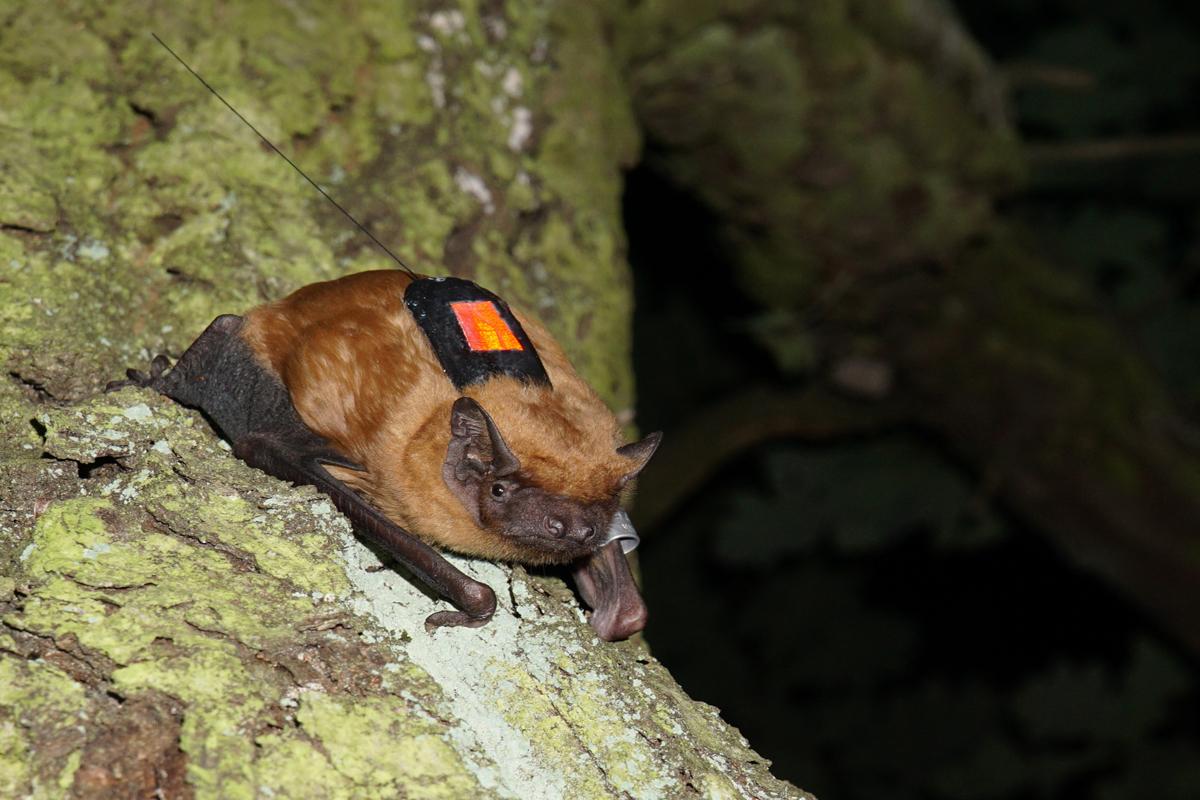A multidisciplinary team of researchers has advanced remote tracking technology to study previously unobserved animal behaviours. Bio-logging, the automated remote recording of animal behaviour has so far been limited through the minimum size and weight of sensors to attach to animals. Now, small vertebrates like bats, lizards and birds can be tagged with miniaturized sensors providing information about their behaviour and habitat use in unprecedented resolution, the team reports in the journal “PLoS Biology”.
“Our sensor network takes bio-logging to the next level,” says Simon Ripperger of the Museum für Naturkunde Berlin who led the field deployments. Remote tracking of animal behaviour relies on devices called bio-loggers that are attached to animals. They can be used to record movements within the habitat, interactions with other tagged animals and body functions like the heart rate.
However, data transmission or data exchange among animal-borne tags are energy-intense and require batteries that make conventional bio-loggers too heavy for most small vertebrate species. Furthermore, some habitat like dense forest or behaviour like resting inside trees, caves, or underground burrows hamper reception of the signals by satellites for GPS-tracking.
Ultra-low power, high-resolution
The research team has developed a system that consists of ground-based receivers that pick up signals from bio-loggers attached to animals. Received data is automatically processed, forwarded and stored for further analysis. Smart algorithms and communication protocols reduce the energy demand to a minimum. However, the extent of habitat covered by the system is restricted: the team has tested it on areas that compare in size to three soccer fields, which is large enough to cover the home range of many small animals. In addition, the system is modular and can be extended.
At tag masses of one to two grams, the bio-loggers are able to transmit data for up to several weeks. Their signals can be used to locate their position, to trace movements even in structurally complex habitats like dense forest, and to record meetings of tagged animals at a time resolution of seconds. “We are seeing a high spatial resolution and can record where animals roam and interact much more precisely than through conventional tracking systems,” Ripperger adds. The team has applied an almost energy neutral solution to remotely access the data over distances of several kilometres at low transmission rates.
Bats, birds, lizards
The researchers chose bats to test and validate the system since they are small-bodied and move fast in dense vegetation, both challenges to the performance of wireless bio-logging networks. They tagged vampire bats (Desmodus rotundus) in Panama to document social networks, mouse-eared bats (Myotis myotis) to study hunting behaviour in a mature deciduous forest in Germany, and common noctule bats (Nyctalus noctula) for long-range data access over more than four kilometres.
“Our system can provide new insights into the behaviours of many smaller animals who could not be tagged with such advanced sensors so far,” says Ripperger. Currently, it is tested to study the habitat use of sand lizards (Lacerta agilis) along train tracks in Germany. Further studies could focus on rodents, songbirds or even large insects such as stag beetles, bush crickets or hawk moths.
The wireless bio-logging network has been developed within the BATS-initiative funded by the German Research Foundation DFG. The Museum für Naturkunde cooperated with the Smithsonian Tropical Research Institute in Panama, the Ohio State University in the USA, the German Friedrich-Alexander University Erlangen-Nuremberg, Brandenburg University of Technology, Technische Universität Braunschweig, Paderborn University, and Berlin-Brandenburg Institute of Advanced Biodiversity Research.
Publication: Ripperger SP, Carter GG, Page RA, Duda N, Koelpin A, Weigel R, et al. (2020) Thinking small: Next-generation sensor networks close the size gap in vertebrate biologging. PLoS Biol 18(4): e3000655. https://doi.org/10.1371/journal.pbio.3000655
